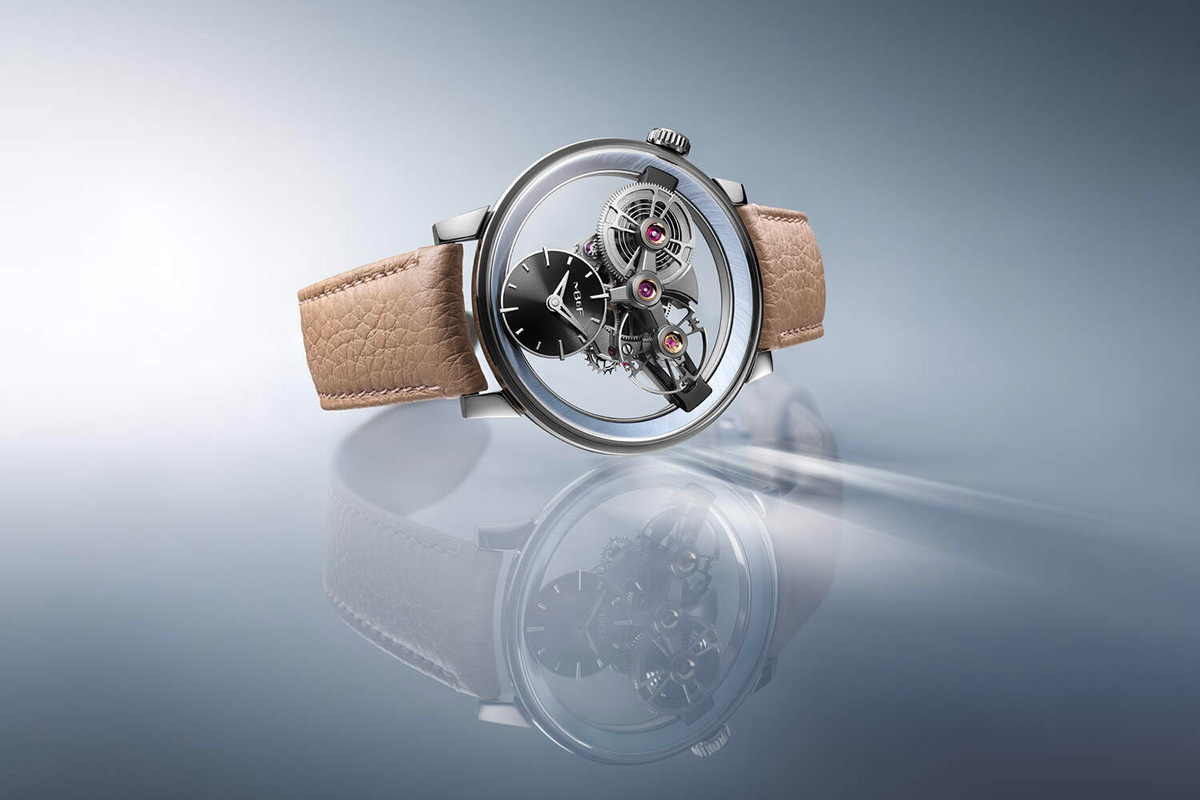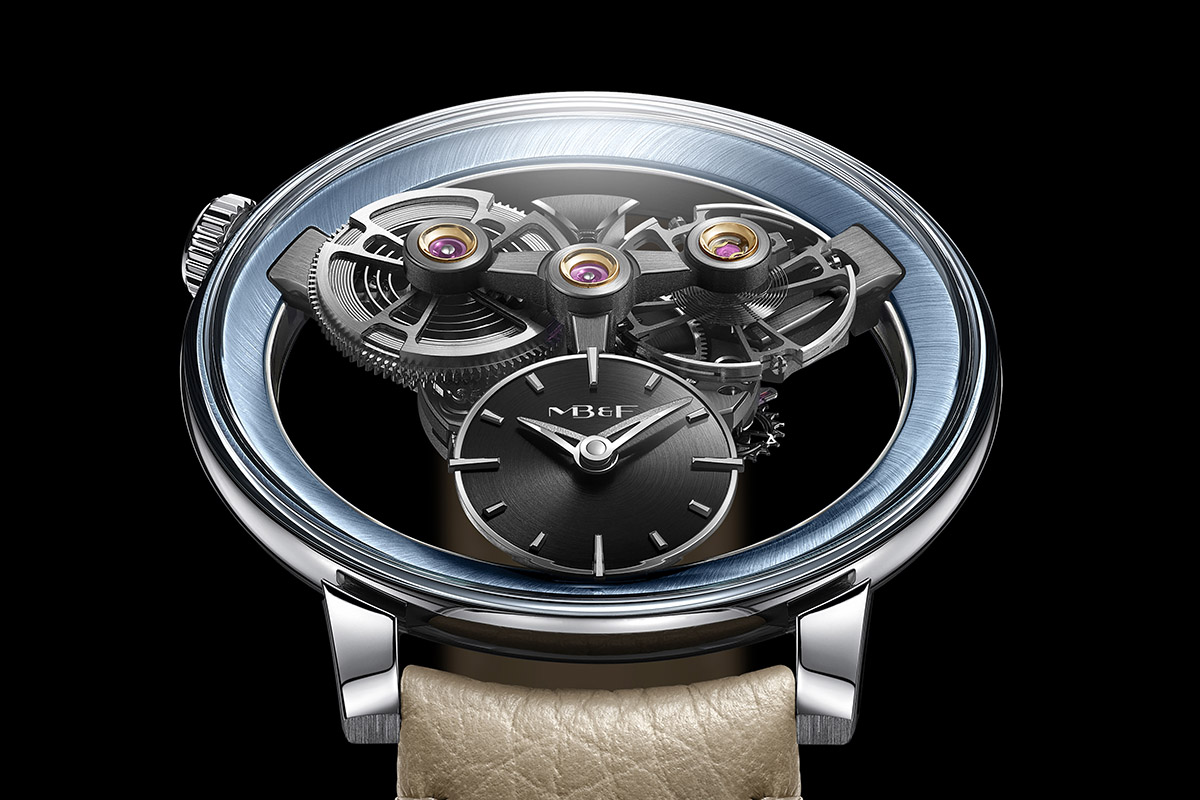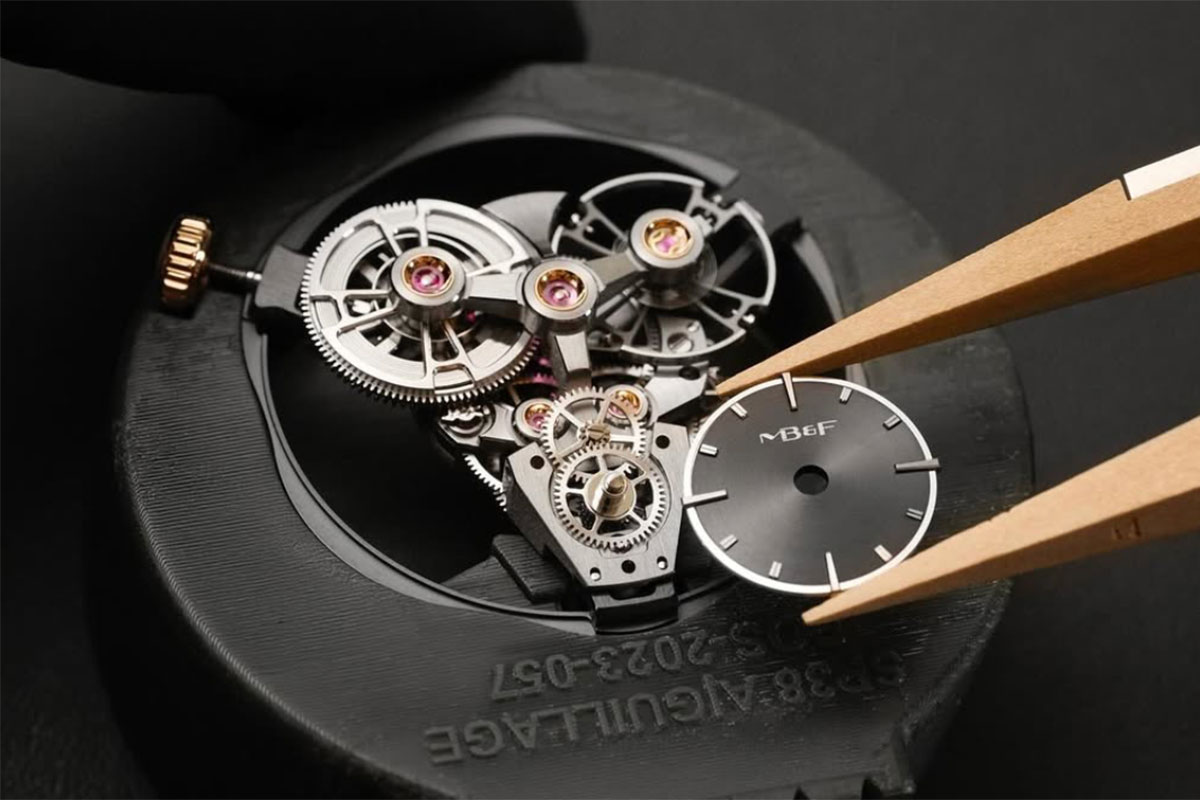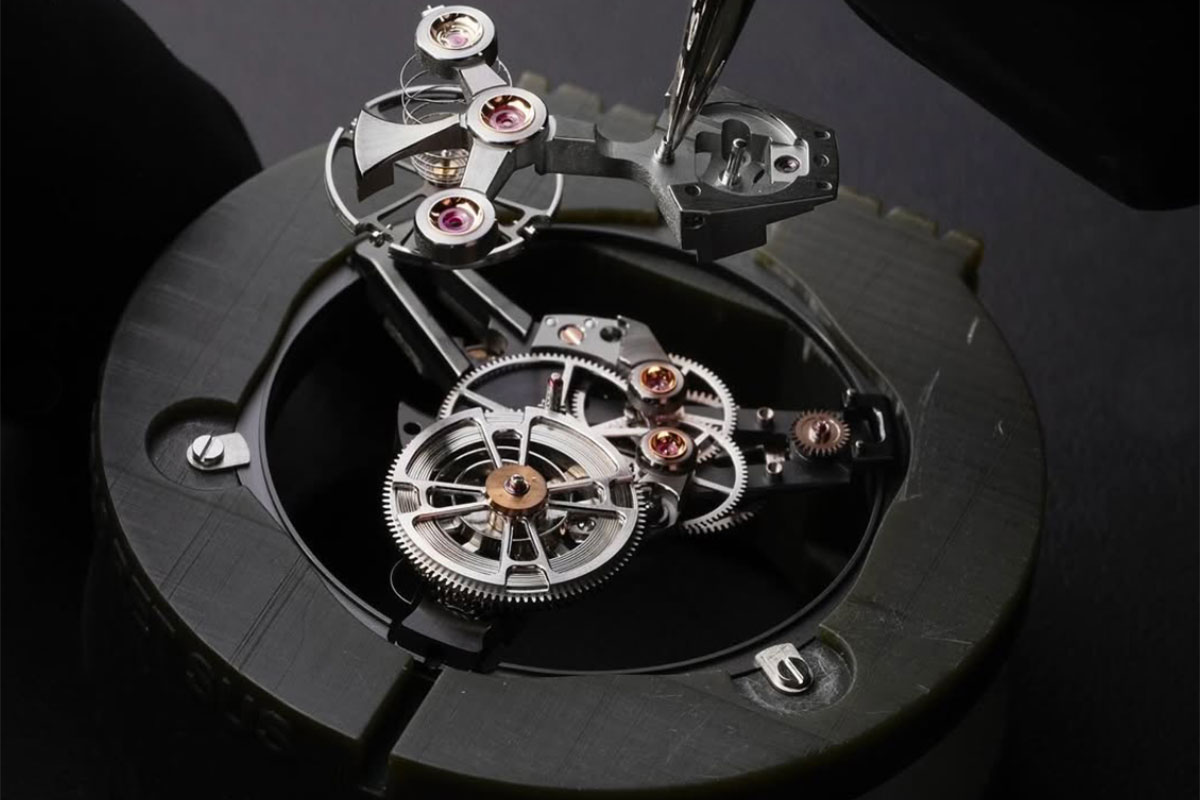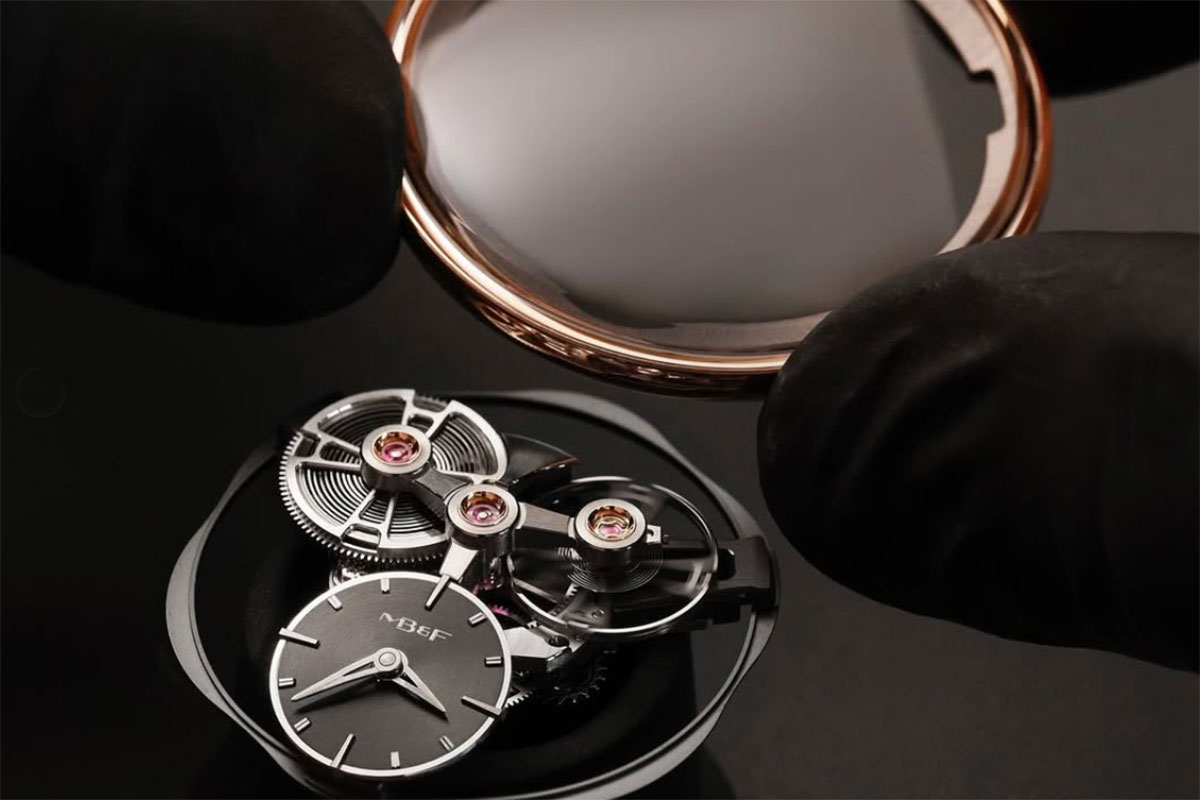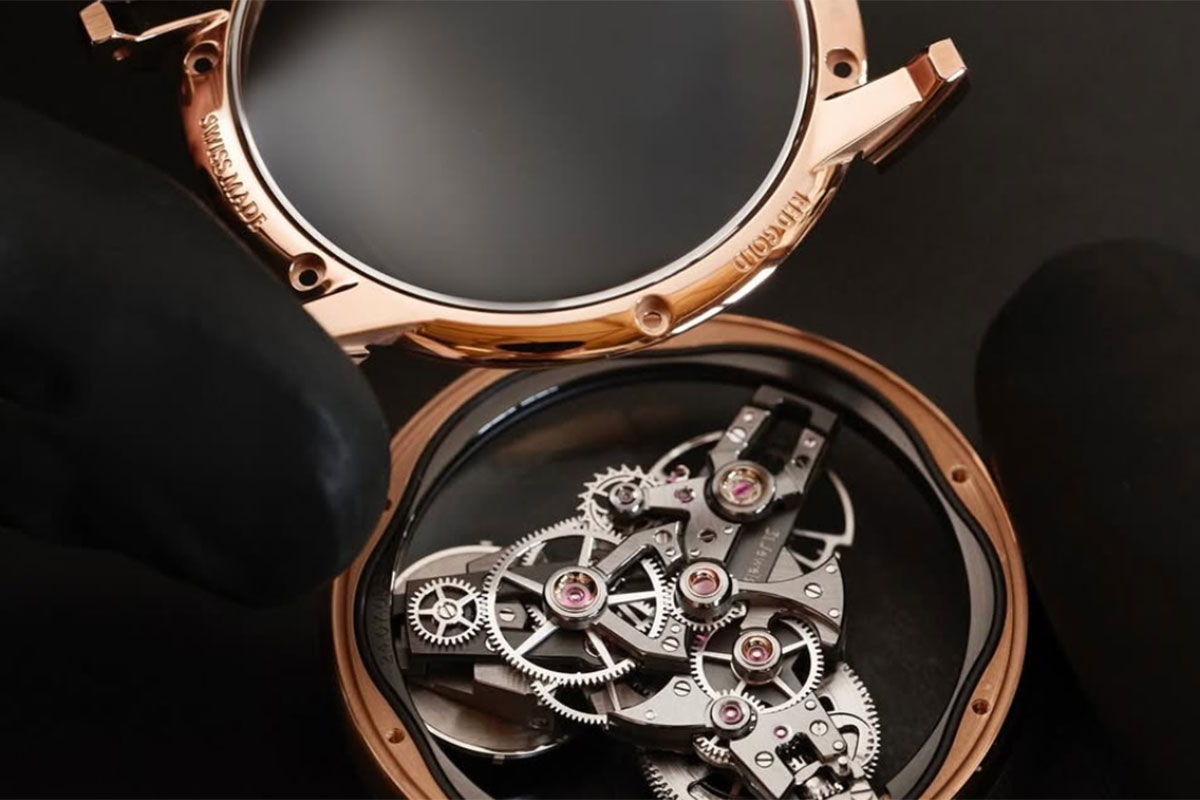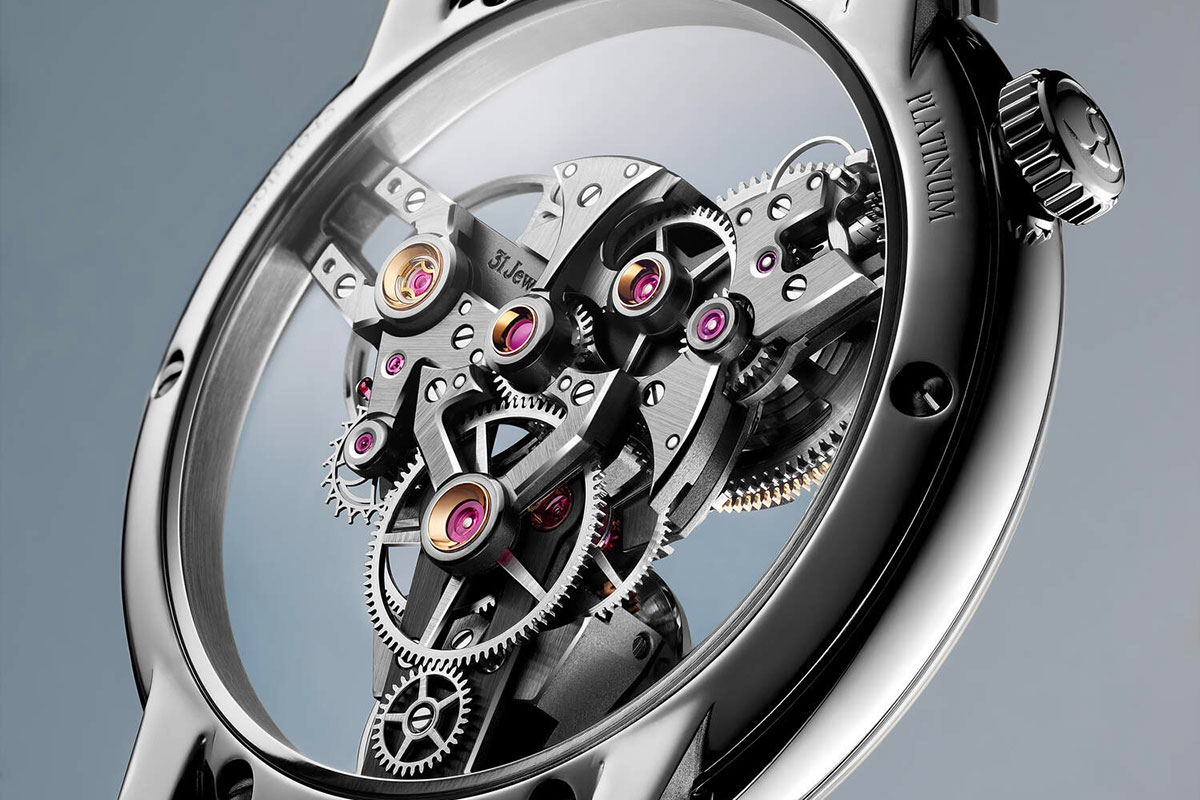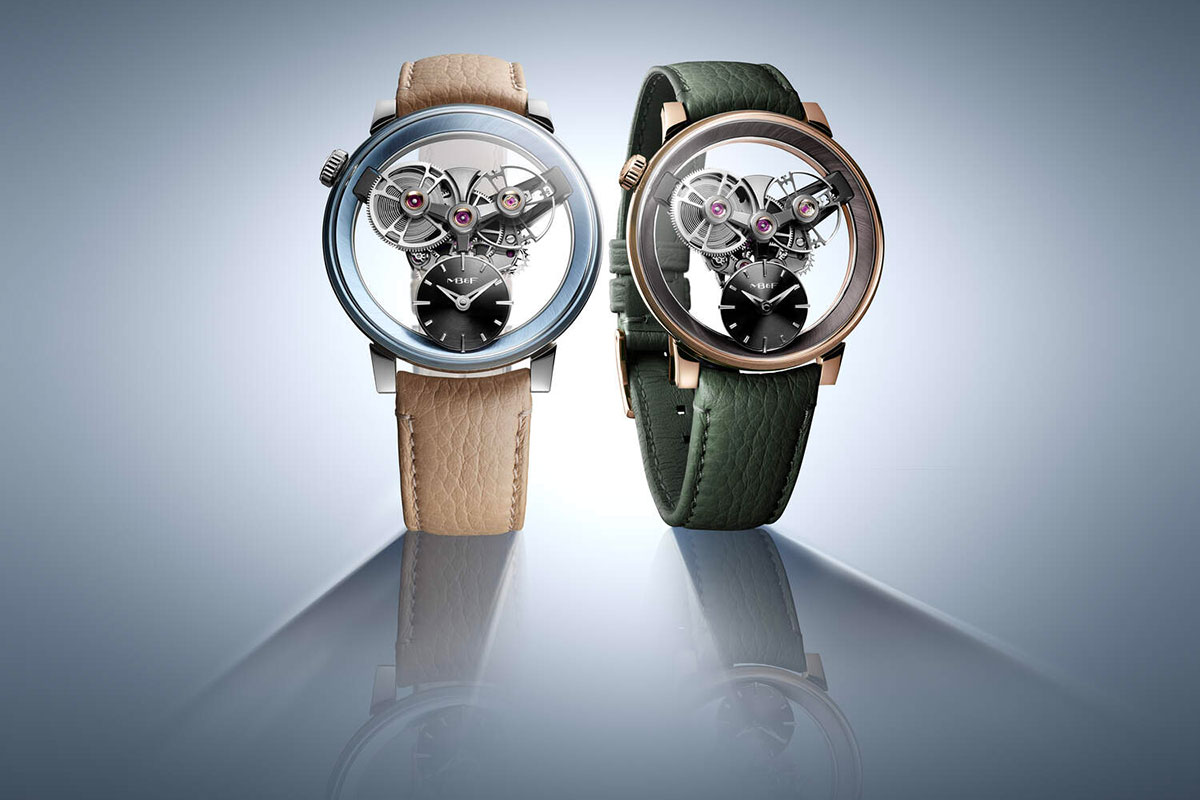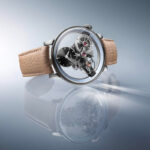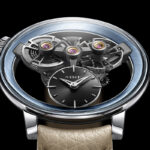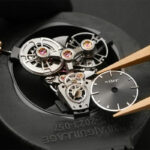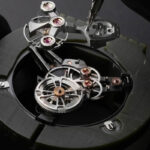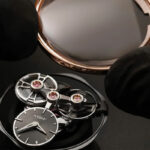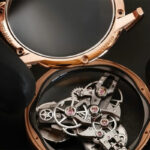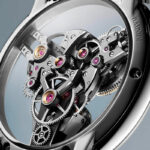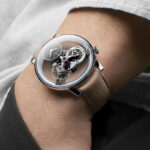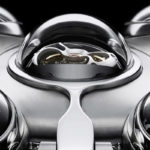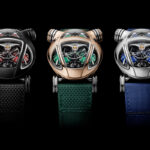This post is also available in: Italian
When I received the press kit for MB&F’s new SP One, I was reminded of something the brand’s founder, Maximilian Büsser, said during a chat we had last year. “Another idea that I will never change is to not be influenced by the market. I don’t think I have ever created something similar to what someone else has done. If someone had already made it, there was no reason for us to make it too”. That is exactly the essence of this watch.
SP One, a bridge between collections
Like most pieces from the Büsser manufacture, the SP One is all about transparency. The movement appears to be suspended in a bubble between the domed sapphire crystal protecting it and the flat sapphire crystal on the back. The eye passes unhindered through the entire structure of the watch, gliding through the calibre, which is far from inconspicuous.
Elegant yet avant-garde, the SP One is the first model in a new Special Project collection that encapsulates the brand’s contemporary aesthetic in a smaller, wearable format. Horological Machines tend to be futuristic, featuring visionary movement architecture and large, structured cases. Legacy Machines, on the other hand, interpret vintage pocket watches, incorporating features such as blued steel hands and a traditional movement layout.
In a sense, the SP One reconciles these two philosophies by offering a contemporary design in more conventional sizes and shapes. The round, smooth case (MB&F liken it to a river pebble) and choice of materials − platinum or rose gold − are both traditional. However, inside, the movement is reminiscent of a Horological Machine, to the extent that the case and precious materials almost seem to disappear. It appears to be ‘swallowed up’ by the light and transparency of the two sapphire crystals, which it essentially only serves to support.
The ‘three tenors’
Three circular elements of the movement stand out: the barrel, the balance and the dial. After all, the SP One calibre was initially named ‘Three Circles’ for a reason. This is nothing new for MB&F in terms of movement skeletonisation. The design and engineering solutions have now made it possible to exploit the conical gears and inclined dial. These two hallmarks of MB&F’s work come together to create an almost pyramidal calibre, with the central ruby serving as the apex.
The SP One calibre’s Y-shaped architecture was developed in-house by the MB&F team from the initial concept to the final design. The vertices of the Y form the three points at which the movement bridges anchor to the case flange. Each one gives substance to the element it supports: the barrel, the balance and the dial. As I wrote earlier, the movement appears to be ‘suspended’ in a bubble, even though it is not. In fact, the bridges are firmly attached to the overall structure of the watch.
MB&F’s signature sloping dial at the 6 o’clock position features a Dlc-coated base and classic polished hour markers and hands. The barrel and balance wheel are arranged symmetrically at the top of the watch. The SP One’s calibre has no visible bridges, screws or wheels, which adds to its elegance. All three elements have identical circumferences to enhance the overall architectural and aesthetic appearance. The flange features a spiral satin-finished surface that adds texture to the entire structure. Depending on the case material, the flange is either blue for platinum or anthracite for pink gold.
The case of the SP One
This can also be said of the case, although personally, I find it hard to call it such, given the prominence of the sapphire in this watch. The overall thickness is 12 mm, and beyond the convexity and softness of the shapes, it is the architecture of the lugs that stands out. As it is not possible to attach them to the front of the case, the MB&F designers have elegantly integrated them into the case back.
While the SP One is at its best when viewed from the front, its architecture is impressive from any angle. The bridges, which are almost invisible from the side of the dial, can be seen peeping through the time train. The scene is stolen by the precise angling of the elements. This is done strictly by hand. Together with the satin-finished, polished and micro-blasted surfaces, this gives the entire movement a balanced appearance.
As I wrote, the case is available in either rose gold or platinum and has a fully polished finish, making it rather discreet. The only original features are the crown at 10 o’clock and the slight floating effect on the lugs. This was probably the intention of Max Büsser and his team when they created the SP One. The lack of a bezel adds to the sense of transparency and lightness without making the watch appear smaller. This, I imagine, makes it uniquely comfortable to wear, along with its soft shape.
Taking a look at the market
I have left room in the captions for further technical details and additional information about the watch. Finally, I will simply remind you of the prices: 67,100 euro for the platinum model and 61,780 euro for the pink gold model, both excluding VAT. And one final thought.
From what I can see in the press kit, the watch encapsulates everything I like about MB&F: the over-the-top ‘exposed’ mechanics, the futuristic design and the touch of classicism. I appreciate that it doesn’t have what I don’t like about the brand, namely the complicated fit. Perhaps Büsser has ultimately been influenced by the market to some extent, despite what he says. Ultimately, this is not necessarily a bad thing.

